Planting method and Propagation of Flowers-- paulownia
Paulownia is a perennial herb of the genus Euphorbia of Gesneriaceae. It is native to Brazil and likes warm and humid environment. The suitable temperature for growth is 18 ℃ ~ 25 ℃. It is not tolerant to low temperature and can withstand high temperature below 35 ℃. Avoid direct sunlight, cold and waterlogging. Paulownia trees are short and small, with large and beautiful flowers, velvet feeling, bright colors, colorful and charming when in full bloom, so it is an excellent indoor potted flower.
Cymbal
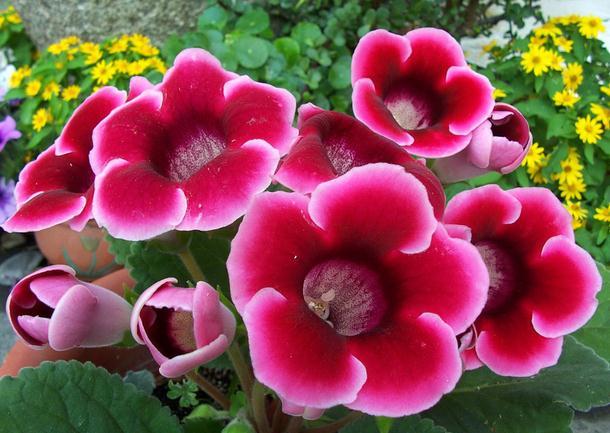
I. Ecological habits
Paulownia is a perennial bulb flower with a long flowering period from spring to summer. It is a famous ornamental flower. There are many varieties of paulownia horticulture, there are mainly three types: wild paulownia flowers are small drooping, mostly purple; large flowers are large and colorful, drooping: large leaves, large flowers, various colors. The underground root of paulownia is tuberous, spherical to oblate. The plant height is 10cm, and the whole plant is succulent. Leaves cross opposite, long oval, densely tomentose, margin dentate, stipitate, slightly fleshy. Flower single axil out, long handle: Corolla tube, up to 10cm about, bell-shaped, unequal five-lobed: flower type has single or double, large and beautiful, velvet feeling; flower color diversity, such as white, pink, red, purple, blue and complex color.
Second, the main points of cultivation
(1) planting
Paulownia should be cultivated in slightly acidic soil rich in humus and loose, often with 3 parts of rotten leaf soil or peat soil, plus 1 part of river sand or perlite and a small amount of base fertilizer. Biennial tubers dormant in winter and begin to sprout in March and need to be changed in time. Planting tubers needs to expose the potted soil, and each tuber only needs to leave one bud. Tubers can be cultivated continuously for 7 to 8 years and blossom twice a year, while those that are too old need to be eliminated and renewed.
(2) watering
At the initial stage of potted plants, the temperature should be kept at about 20 ℃ and the air humidity should be higher, but less watering should be done. After resuming growth, the amount of water gradually increased to keep the soil moist. During the growing period, the air humidity is high, and the leaves grow luxuriantly and verdant. The dry climate in the north should be sprayed frequently to maintain high air humidity. Summer high temperature season, to appropriate less watering, basin soil can not be irrigated if not dry. When the temperature decreases in autumn, the amount of water can be gradually reduced and the plant will gradually go into dormancy. After the branches and leaves are withered and yellow in the dormant period, the watering is reduced to stop watering completely. Keep dry during dormancy in winter, such as excessive humidity, low temperature and perishable tubers. Watering should be uniform and should not be too wet, otherwise it will lead to rotten roots and leaves. Should not directly water the leaves, in case there are water stains, causing leaves to rot.
(3) fertilization
Big yantong likes to be fat. When planting, should apply sufficient base fertilizer, can put a little bone powder or 1 tablespoon calcium superphosphate on the basin floor, and then cover coarse sand and culture soil. In the period of vigorous growth, thin fertilizer and water were applied once a week, and the effect of mature organic fertilizer (such as rotten bean cake water) was the best. When the bud was formed, 0.5% calcium superphosphate was added for 1 or 2 times. Because the leaf surface is fluffy, do not stain the leaf surface and flower buds when fertilizing, so as not to cause decay. After each fertilization, spray clear water once to keep the leaf surface clean.
(4) temperature
The suitable temperature for the growth of paulownia is 10 ℃ ~ 25 ℃, and the air humidity is high. At high temperature, attention should be paid to ventilation, cooling and moisturizing. The temperature in bud stage should not be too high, 10 ℃ ~ 18 ℃ is suitable, otherwise it will lead to pedicel slender and thin. If the temperature can be lowered to 12 ℃ ~ 15 ℃ before flowering, the flowering period can be longer and the flowers will not be too delicate. During the dormant period of deciduous leaves in winter, the tuber can survive the winter safely at about 5 ℃.
(5) Lighting
Paulownia is a semi-negative plant. The light during the growing period should not be too strong, otherwise it will lead to slow growth and shorten the flowering period, usually covering 50% of the light is better. From April onwards, as the light increases, it is necessary to gradually speed up the strong light around noon. In late spring and early summer, if the light is too strong, the growth will be slow, and the strong light will cause the plant to wither and die. The flowering period can appropriately prolong the shading time to prolong the flowering period. After entering the fruiting stage, the shading time should be shortened to promote seed maturity and corm development. In winter, the seedlings should receive enough sunlight to make the seedlings grow stronger. It should be shaded for a period of time after sowing and transplanting seedlings.
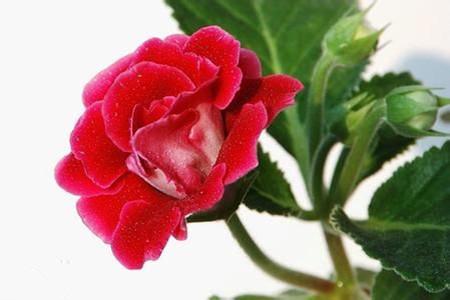
III. Reproduction
Paulownia is mainly propagated by sowing, and can also be propagated by ball-dividing method, leaf cutting method and branch cutting method.
(1) sowing method
The seeds of paulownia are so small that they can be sowed every year in greenhouse, but it takes about 8 months from sowing to flowering from October to December. Soak the seeds in warm water for 24 hours before sowing to promote their early germination. Use shallow pots or wooden boxes to load rotten leaf soil, vegetable garden soil and fine sand mixed culture soil. After leveling the soil, soak the bottom of the basin with water and sow seeds. After sowing, the soil should be covered with thin or uncovered soil and covered with glass. The temperature of germination is 20 ℃ ~ 22 ℃. After 10-15 days, it germinates, and after emergence, it gradually sees sunlight. When the seedlings grow 3-4 true leaves, they are planted in small pots. The seedling stage should be shaded, avoid direct sunlight, and often spray with water to maintain high humidity. In addition, apply thin fertilizer and water every 10 days or so.
(2) Ball-sharing method
The plants growing for 2 ~ 3 years were selected and carried out before changing pots in spring. After the tuber germinates, the tuber is divided into pieces with a blade, requiring each piece to have a bud eye, otherwise it can only take root and cannot form a growing branch. After segmentation, the incision is smeared with plant ash and buried in loose soil. Don't bury all the spheres in the ground. The upper part of the sphere should be exposed to the soil surface. The sprouting of paulownia starts from the upper part of the sphere, and all the buds are buried in the soil and are easy to rot.
(3) Leaf insertion method
Select the robust leaf, leave the petiole 1cm, insert it obliquely in the clean river sand, insert the 1x3 on the leaf surface in the river sand, and leave it on the ground surface with proper shade. Under the temperature of 20 ℃ ~ 25 ℃, 15Mul can take root in 20 days, grow seedlings and transplant into a small pot.
(4) Branch cutting method
The twigs sprouted from the tubers of 2cm~3cm were inserted into the fine sand to shade and avoid direct sunlight. The shoots were maintained for 18 ℃ ~ 22 ℃ and could take root in about 15 days.
IV. Pest control
Paulownia is prone to leaf snail pests, resulting in yellowing and shedding of leaves, and the plant will die in serious cases. During the growth period, there are mainly inchworm feeding axillary buds, which can be controlled by omethoate 1000 times. When it is found that there are red spiders on the leaves, 1000 times of miteling can be sprayed, and the control effect is very good. It is generally sprayed once a week, 2-3 times in a row.
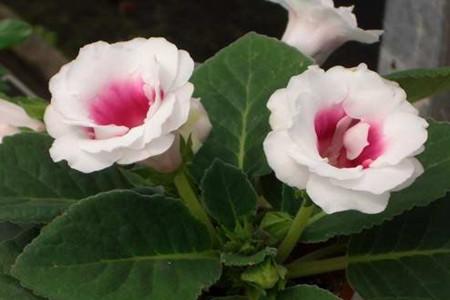
cultivation Secret
I. Variety selection
If we want to make paulownia blossom more, we should first choose those imported hybrid varieties with various flowering, short and strong plant types, strong disease resistance, rapid growth and easy management as mother plants, and single-petal varieties have more flowering than double-petal varieties. The method of sowing is generally used to raise seedlings. After emergence, it is necessary to strengthen daily management in time, and pay attention to the seedlings with three cotyledons at the same time, such seedlings tend to bloom more, and have heredity, which can be used through asexual reproduction.
Second, topping and budding
The traditional cultivation of paulownia is generally done as a single plant, but this cultivation method is generally less than small flowers in pots, so it is difficult to achieve the ornamental effect of "flowers in clusters". To change this situation, the most direct way is to wipe the top and pick the heart, promote more side branches, so that there will be more and better flowers. In a cultivation process, a grower accidentally found that a seedling unwittingly grew into two side branches (suspected to be caused by insect pests or external forces at that time), resulting in as many as 16 flowers in a very small pot at the same time. Therefore, it is appropriate to pick the heart as soon as possible, and it is beneficial to take shape and blossom as soon as possible. After picking the heart, leave 2 or 3 new buds with the same height and moderate position in time.
Third, strengthen fertilizer and water
The flowerpot used in traditional cultivation of paulownia is too small, although we can continue to use a small flowerpot with a caliber of about 12 cm according to its growth, but the best way is to change it into a larger flowerpot in time (such as a caliber of 15-16 cm) to meet its growth needs. New roots encounter new soil, the growth will be more prosperous, and after the topping of the big rock tree because of luxuriant branches and leaves, need a large amount of fertilizer, to be fattened and strong in time, it is best to irrigate with water. In addition, foliar fertilizer can be sprayed with a concentration not more than 20.3%. No, no, no. According to peer introduction, he will be a pot of untopped big rock tree, with "Huiyou" brand quick-acting fertilizer regularly sprayed, but also out of 7 flowers, beautiful.
Rainbow absorbs water
The leaves of paulownia are fleshy and densely fluffy, which is easy to stain the leaves when watering, resulting in local decay of the leaves, which has become the target of infection by many pathogens. In order to avoid this situation, the principle of siphon should be used to get water and fertilizer through the hole at the bottom of the flowerpot. The greatest advantage of this method is that it can not only effectively prevent soiling leaves, but also make full and effective use of fertilizer and water, which is very convenient in management. In practice, it is also found that it is not absolutely impossible to retain water on the leaves, as long as it is clear water or occasionally contains a small amount of inorganic fertilizer (the content does not exceed the spraying concentration, that is, 2-3 ‰), even if it is left on the leaves. In fact, febrile people often spray their leaves with clean water, which is not a big deal and grows better.
5. Cultivation substrate
In order to promote paulownia to blossom more and bloom well, the root system must be cultivated well. The root system of paulownia is slender, hairy and not resistant to water stains and clayey soil. The cultivation soil should choose loose and permeable cultivation media, such as rotten leaf soil, perlite, peat, sawdust (mature), vermiculite, pine needle, mushroom waste (mature), fertilizer can be used sesame sauce residue (mature), poultry manure and compound fertilizer, etc. Sowing soil, plain soil is better, such as peat and vermiculite. Especially at the seedling stage, the less fertilizer, the better, so as to avoid fertilizer damage (which can be accomplished by applying light fertilizer frequently).
VI. Proper shading
Traditionally cultivated paulownia is mostly protected by shading, but its deficiency is that it is easy to cause overgrowth and thinness of the plant. Therefore, according to some data, if it is exposed to the sun and does not cause leaf burns, it can fully meet its demand for light, which can promote the plant type to be short and strong, dense and dense, and bloom more. However, in practice, many growers have found that if they pursue light too much without considering the light intensity, the leaves will appear physiological yellowing, which is far less green and vibrant than the leaves in the shade environment. Growers all believe that everything should proceed from reality, first of all, it is necessary to properly shade, in the case of not affecting the normal growth, slightly strengthen the light to ensure its smooth and safe summer and normal growth.
7. Flowering treatment
When paulownia blossoms, if the leaves around the flowers hinder the opening of the flowers, you can cut off part of the leaves or cut off half of the relevant leaves as needed, so that the flowers are all concentrated at the top of the plant to form a bouquet. After safely overwintering, keep a section of leafless stem (about 3-4 cm long) and store it in time at a temperature of not less than 5 ℃. During the overwintering, the sand should not be too wet to prevent the corms from rotting. If the sand is too dry, spray a small amount of water as appropriate to prevent the tuber from drying up.
When the flowers bloom in spring, the bulbs send out buds, leave 2-3 positions according to the need for appropriate, tall and short coordinated and full and strong new buds, then dig out the seed bulbs and transplant them into the pot and enter the normal maintenance.
The big rock carp cultivated by the above-mentioned methods can produce up to 18 flowers at a time. Among them, a large paulownia cultivated in a 12 cm flowerpot is no more than 15 cm in height and has only 2 branches, that is, 16 flowers bloom at the same time, which is very beautiful.
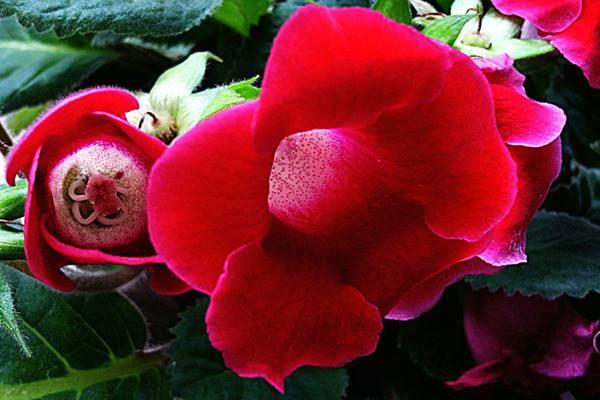
- Prev
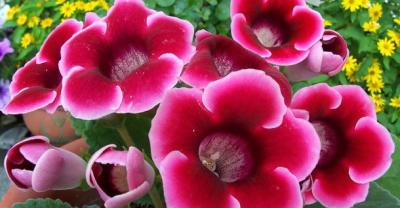
A tutorial on planting succulent plants by hand
Attention to the course of succulent plant cultivation: matters needing attention in succulent plant cultivation! Succulent plants note that the constituent is water. Itself is like a stored water, even if it is watered frequently.
- Next
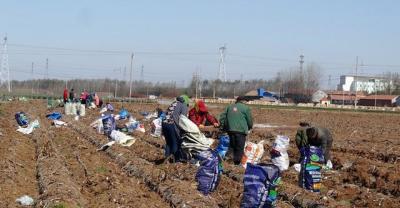
Ten kinds of plants that lazy people can grow very well.
Fresh animals have their developmental discipline, with flowers falling, sprouting in spring, yellow leaves in autumn and even fallen leaves. Haina Tiansheng is in the design and construction of plane greening.
Related
- Fuxing push coffee new agricultural production and marketing class: lack of small-scale processing plants
- Jujube rice field leisure farm deep ploughing Yilan for five years to create a space for organic food and play
- Nongyu Farm-A trial of organic papaya for brave women with advanced technology
- Four points for attention in the prevention and control of diseases and insect pests of edible fungi
- How to add nutrient solution to Edible Fungi
- Is there any good way to control edible fungus mites?
- Open Inoculation Technology of Edible Fungi
- Is there any clever way to use fertilizer for edible fungus in winter?
- What agents are used to kill the pathogens of edible fungi in the mushroom shed?
- Rapid drying of Edible Fungi

